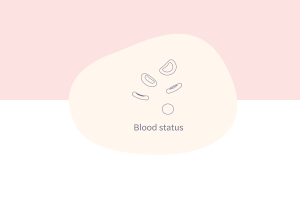Testosterone
Hormones
What is Testosterone?
Testosterone is the primary sex hormone in men though it is also found in women in smaller amounts. Testosterone is predominantly produced by the gonads – in men, this is the testicles and in women this is the ovaries – as well as in smaller amounts in the adrenal glands. Known as an androgen, levels of testosterone become elevated during puberty and are responsible for the development of male sex characteristics, including deepening of the voice, pubic hair growth as well as increase in height and weight. It is also responsible for the development of the male reproductive organs and is essential in the production of sperm through adult life.
Most of the testosterone that is circulating in the blood is bound to sex globumin binding protein (SHBG), and a small proportion is also loosely bound to albumin. About 3% of testosterone is free and unbound in men and less than 1% in women. Only free and unbound testosterone is biologically active. In women, the ratio between total testosterone and SHBG, called the free androgen index (FAI), correlates well with free testosterone levels, but in men the calculation of free testosterone requires the use of more complex formulas. The Vermeulen equation is the most commonly used in the UK.
Why is this analysis important?
The levels of testosterone vary in individuals – this can be dependent on sex, age as well as genetic variation. Furthermore, the type and level of exercise that individuals do can also affect levels. Typically, those who participate in more endurance type exercise are found to have lower levels, whereas those who do more strength training are found to have higher levels. These points are especially important when one considers that after the age of 35 there is typically a 1-3% decrease in levels annually. Beyond its role in sexual characteristics and fertility in males, testosterone has a number of further important roles in both men and women.
In men:
-
Is the key hormone in maintaining bone health
-
Important in muscle strength and mass
-
Important in red cell production
-
Is important in fat distribution – lower levels are associated with abdominal adiposity
-
Sexual drive
In women:
Though the majority of testosterone in women is converted to oestradiol, there are a number of roles for testosterone in women:
-
Increase in lean mass and strength
-
Bone density
-
Brain function
-
Well-being
Due to the important role of testosterone on a number of systems in the body, low levels can result in the following signs and symptoms in both men and women:
-
Low sex drive
-
Low mood and irritability
-
Fatigue
-
Difficulty with concentration
-
Reduced sense of well-being
-
Thinning of bones (osteoporosis)
-
Increased body fat – especially around the abdomen
-
Reduced muscular strength
In men, beyond the list above, low testosterone can also present with infertility, erectile dysfunction and gynaecomastia (breast development).
Results
Causes of low testosterone:
Testosterone levels decline naturally with increased age
-
Type 2 diabetes
-
Kidney disease
-
Liver disease
-
Obesity
-
Genetic disorders
-
Long term steroid use
-
Treatments used in cancer treatment
-
Excessive alcohol use
-
Infections – typically those that affect the testes
Though the above are more typically seen in men, alterations can occur in women as well.
High levels of testosterone are more uncommon, however can be seen in those who use anabolic steroids, as well as in some tumours. In women, high levels of testosterone is typically linked to polycystic ovarian syndrome (PCOS) – which can present with infertility and acne.
Other Considerations
Adequate levels of testosterone are important for men and women, and the following have been shown to be important to improve levels:
-
Resistance training – studies have shown that strength training increases testosterone levels. This is particularly beneficial for those with normal to low levels.
-
Avoidance of refined carbohydrates. This has shown to lead to a 25% temporary reduction in testosterone in studies.
-
Adequate sleep as well as recovery from exercise training.
-
Low levels of zinc and vitamin D have both been associated with low levels of testosterone.
Tests that include this marker
References
Nassar GN, Leslie SW. Physiology, Testosterone. [Updated 2021 Jan 9]. In: StatPearls [Internet]. Treasure Island (FL): StatPearls Publishing; 2021 Jan-. Available from: https://www.ncbi.nlm.nih.gov/books/NBK526128/









